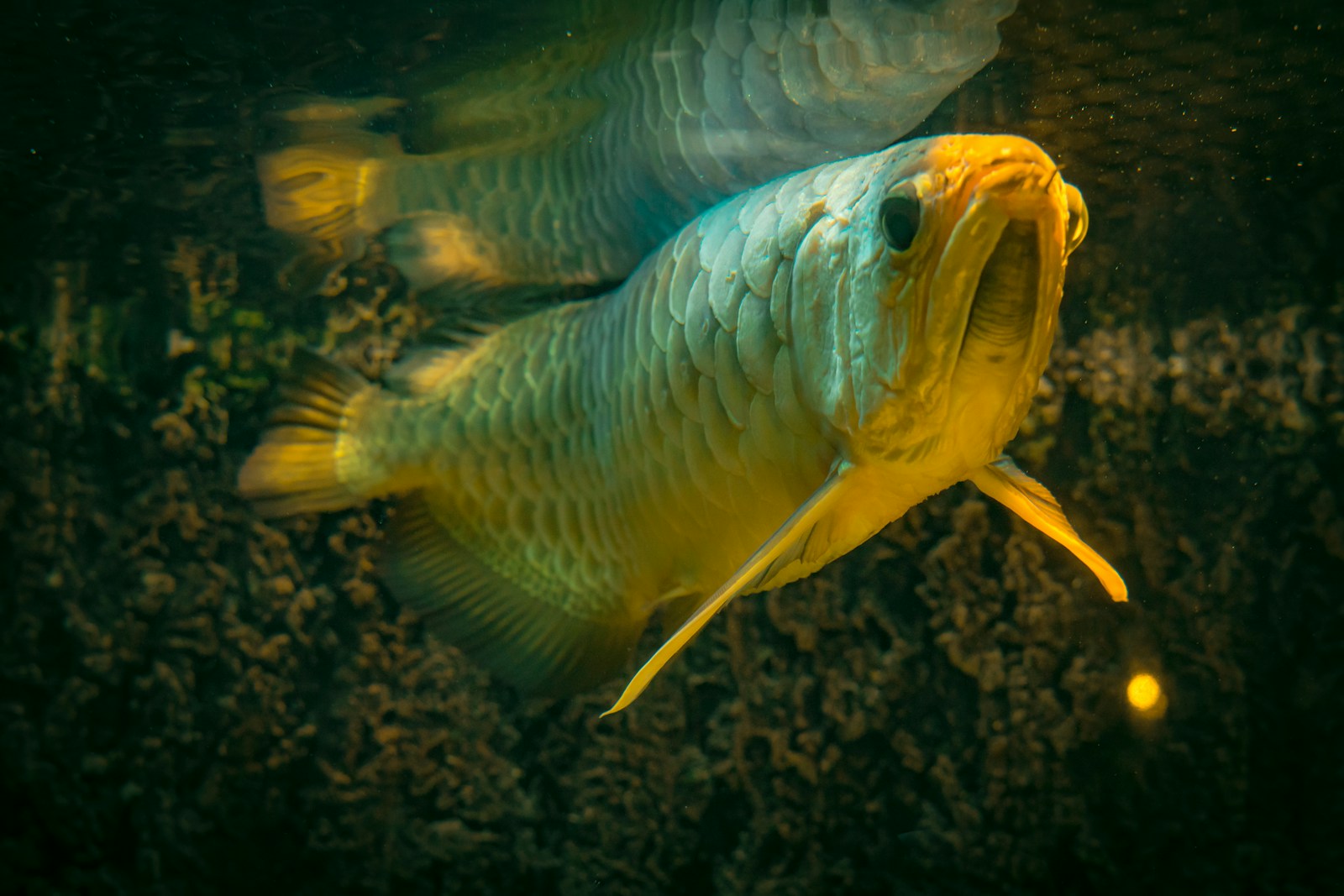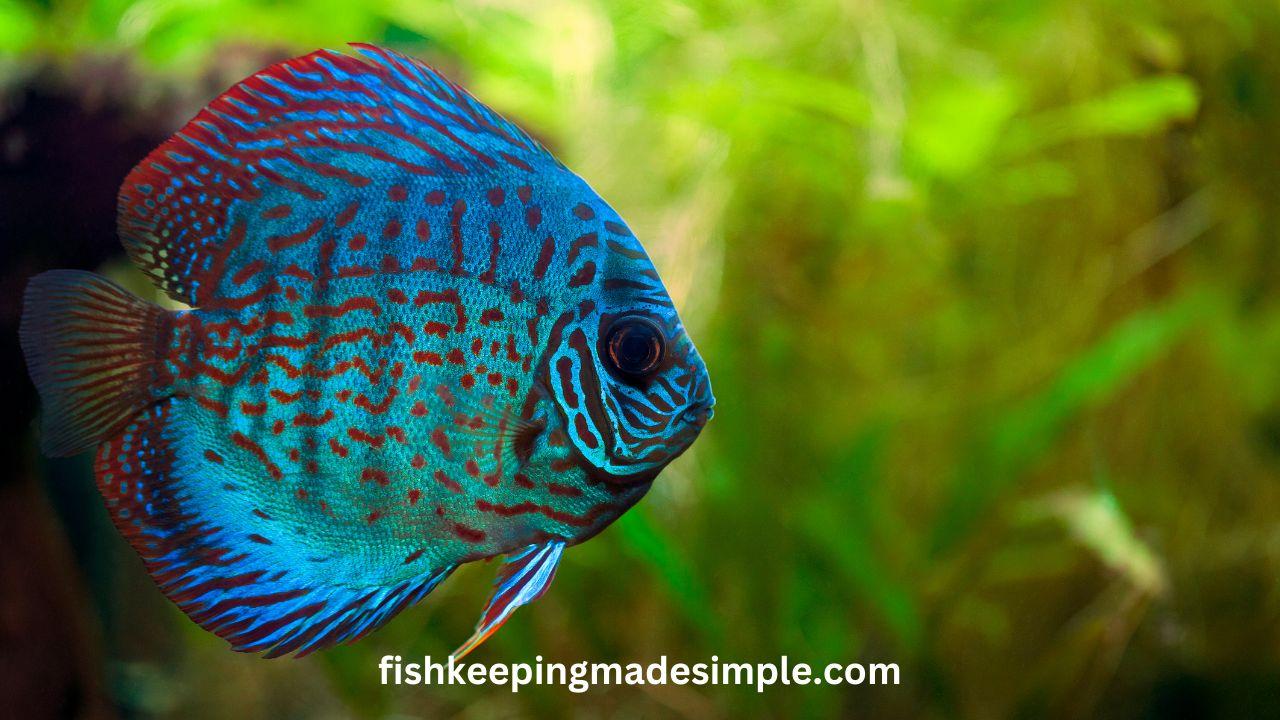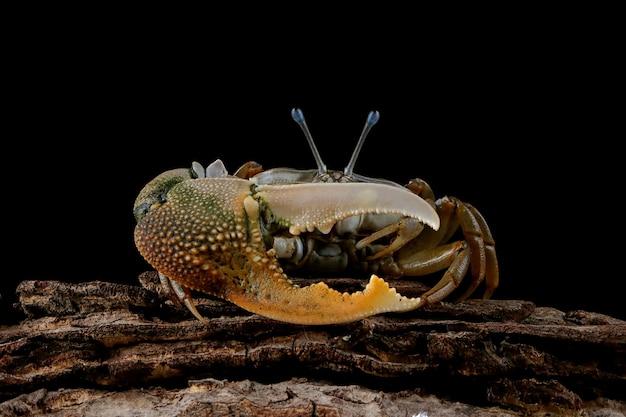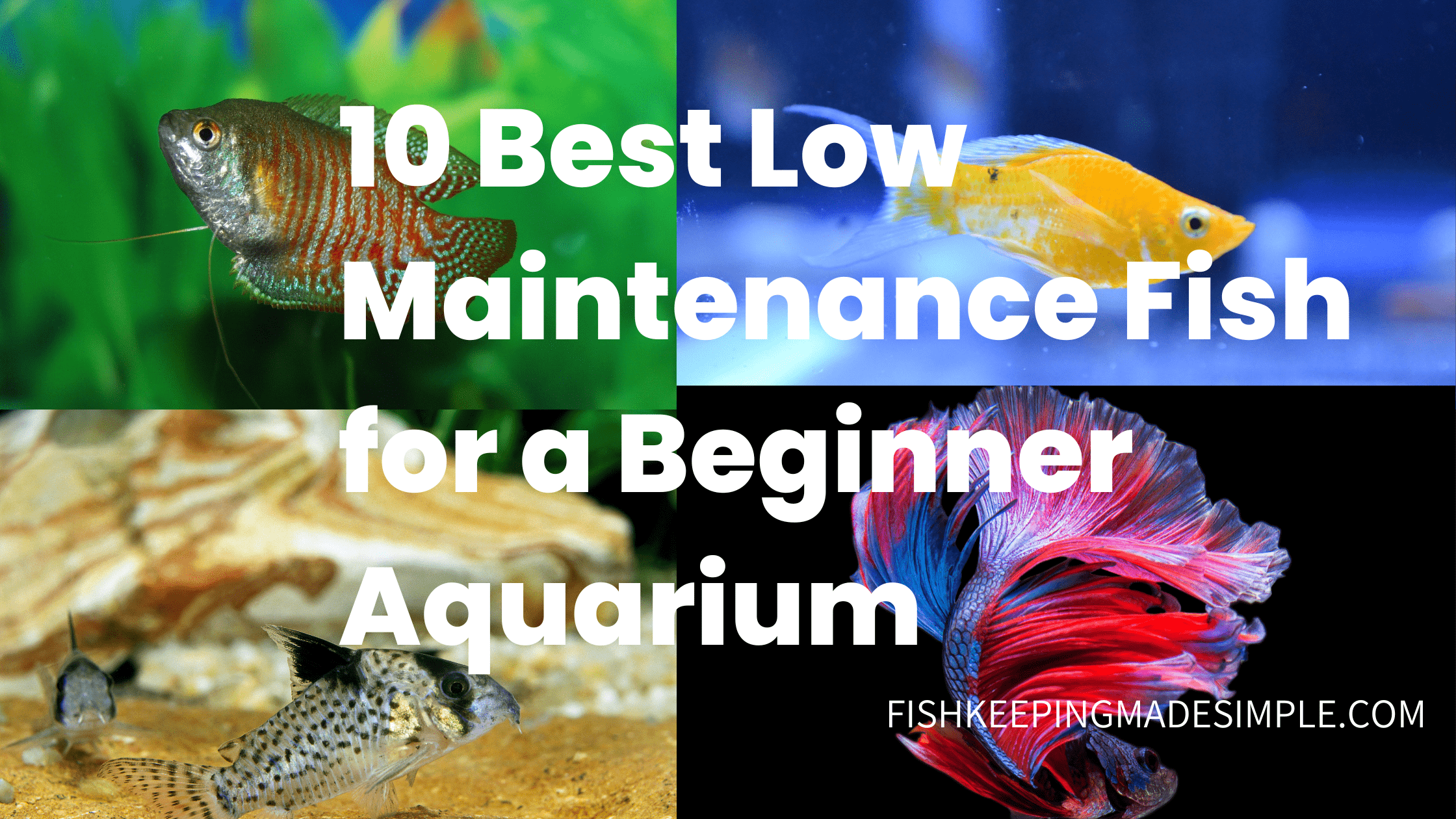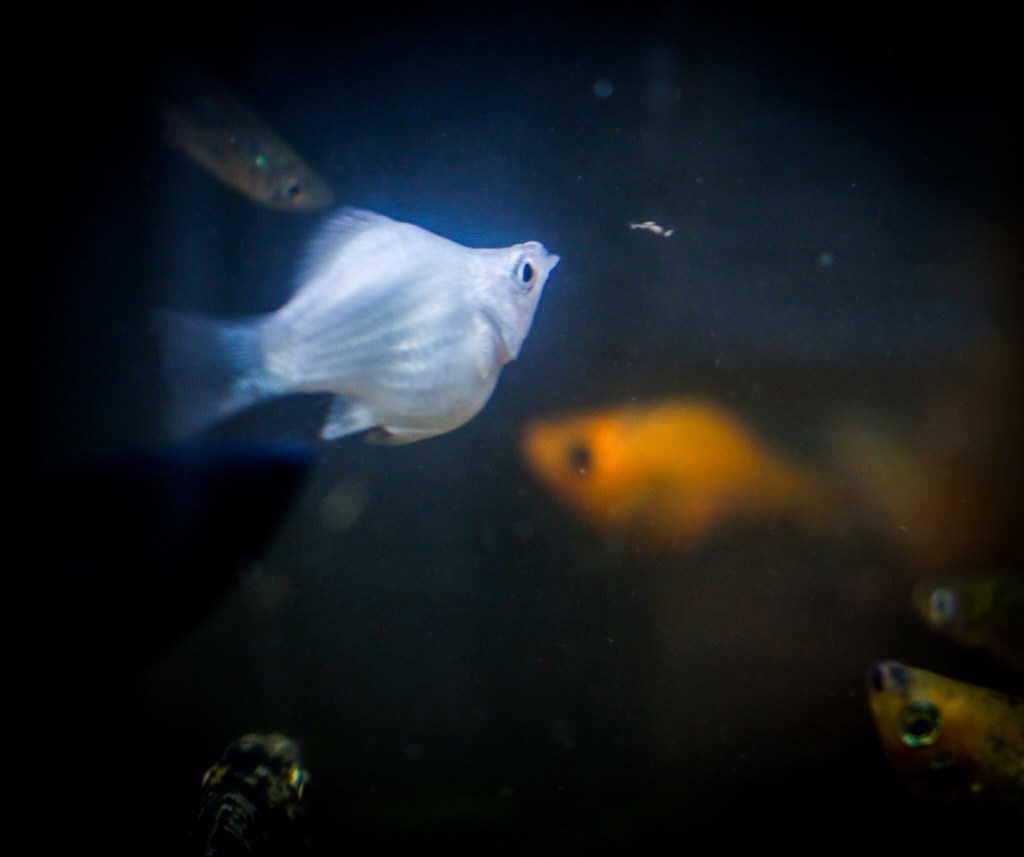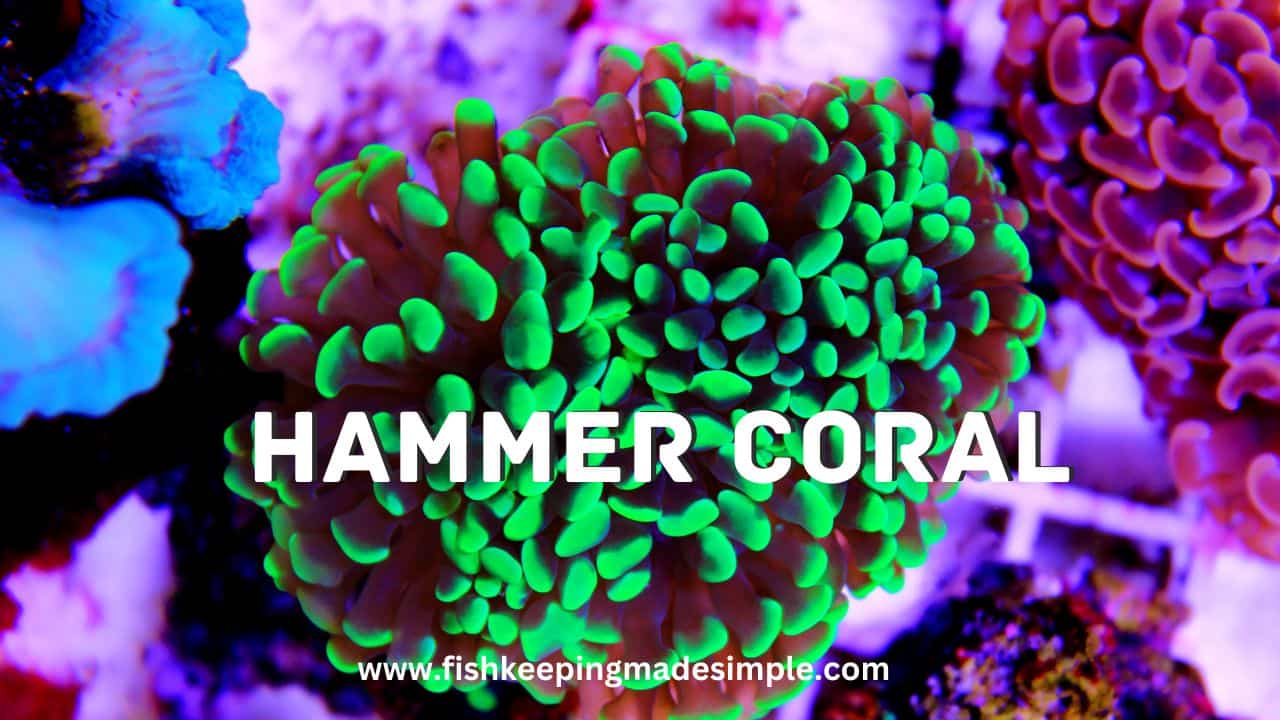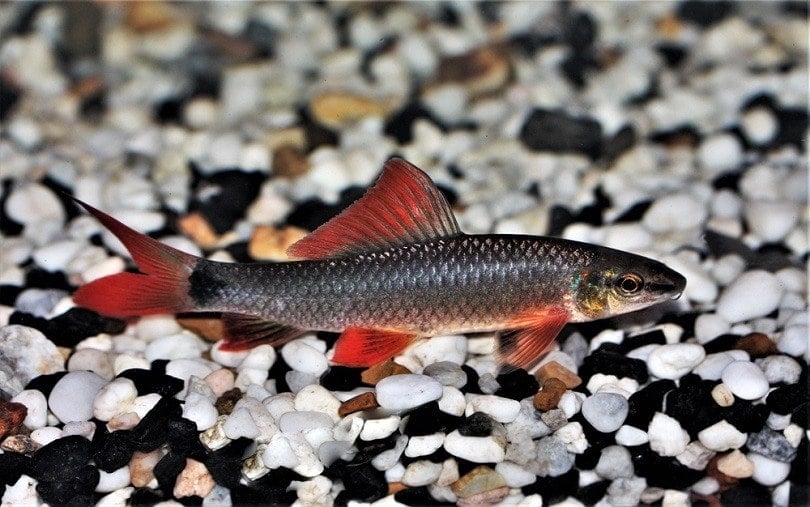Arowana Fish Tank Setup: Did you know that Arowana fish can grow up to two inches per month within their first year? Originating from the tropical regions of South America, Asia, Australia, and Africa, these majestic fish are admired for their prehistoric appearance and cultural symbolism of health, luck, and prosperity.
Due to their sensitivity to nitrates, Arowana fish require experienced aquarists who can diligently perform regular water quality tests and partial water changes to keep nitrite levels near zero. These fish can reach an impressive three feet in adulthood, necessitating a spacious tank of at least 150 gallons equipped with a powerful filtration system. Power filters or external canister filters with high gallons per hour (GPH) ratings are essential to maintaining a healthy environment for the Arowana.
Table of Contents
Arowana Fish Tank Setup : Key Takeaways
- Arowana fish can grow up to two inches per month within their first year.
- Originating from tropical regions, they symbolize health, luck, and prosperity in various cultures.
- Regular water quality tests and partial changes are crucial for maintaining low nitrite levels.
- A spacious tank of at least 150 gallons is essential for their growth and well-being.
- Effective filtration systems, such as power filters or external canister filters, are necessary.
Choosing the Right Tank for Arowana Fish
Ensuring the correct tank size and dimensions is crucial for a healthy and happy Arowana. Thoughtful Arowana Tank Selection and understanding Arowana Habitat Requirements are key to providing a suitable environment for these magnificent creatures.
Arowana Tank Size Requirements
Arowanas can grow to impressive lengths and need ample swimming space. A tank of at least 150 gallons is necessary to accommodate their size and active behavior. Larger tanks are always better, resulting in a more comfortable and natural habitat.
Ideal Tank Shape and Dimensions
The tank’s footprint, specifically its length and width, is more important than height due to the Arowanas’ surface swimming tendencies. A tank that’s long and wide rather than tall is ideal. Also, ensure the tank has a tight-fitting hood to prevent these strong jumpers from leaping out of the water.
Proper tank placement is also vital. Avoid areas with direct sunlight, windows, or air conditioners as these could lead to temperature fluctuations or discomfort for the Arowana.
| Tank Feature | Recommendation |
|---|---|
| Minimum Size | 150 gallons |
| Preferred Shape | Long and Wide |
| Necessary Equipment | Tightly Fitted Hood |
| Placement Considerations | Avoid Direct Sunlight and HVAC Proximity |
Careful consideration of Arowana Habitat Requirements will ensure your fish thrives in a well-suited environment, contributing to their overall health and longevity.
Essential Equipment for Arowana Tanks
Creating a thriving environment for your Arowana requires the right equipment to support their needs. Ensuring sufficient filtration, proper heating, and adequate lighting can greatly enhance your Arowana’s health and well-being.
Filtration Systems
Arowana tank filtration is paramount to maintaining water quality. High-capacity filters, such as power filters and external canisters, are ideal choices. These systems should be capable of processing the tank’s entire volume at least four times per hour. Effective filtration not only removes physical debris but also helps in the detoxification of harmful substances like ammonia and nitrites, promoting a stable aquatic environment.
Heaters and Thermometers
Stability in temperature is crucial for Arowanas. Heaters designed for Arowana tanks should provide 2.5–5 watts per gallon to achieve the desired temperature range of 72-82°F. Regular monitoring with reliable thermometers ensures that the temperature remains consistent, preventing stress and potential health issues. Addressing heater requirements for Arowana tanks contributes significantly to maintaining their overall well-being.
Lighting Options
Proper lighting not only showcases the Arowana’s natural beauty but also plays a role in their health. Full-spectrum lighting is recommended to simulate natural sunlight, supporting physiological processes and enhancing coloration. When considering Arowana lighting needs, using a combination of daylight and aquarium-specific lights can create a balanced and visually appealing environment for your fish.
Arowana Fish Tank Setup
When embarking on an Arowana aquarium setup, ensuring you have the proper equipment and arrangement is key. An Arowana tank requires substantial space, ideally placed in an area with easy access to fresh water for refills and an efficient system for waste water management. Successfully preparing an Arowana tank involves creating a stable environment, which includes thoroughly cycling the tank before introducing your fish.
Initial steps in any Arowana aquarium setup should include selecting the right tank size and shape. This ensures that your Arowana can thrive in a spacious and comfortable habitat. Equally important is having a sufficient filtration system to maintain water quality, as well as reliable heaters to keep the water within the optimal temperature range. Proper lighting will not only highlight the beauty of your Arowana but also contribute to a healthier environment.
When preparing an Arowana tank, attention to detail cannot be overstated. The tank must be securely fitted with a hood to prevent the notorious leaping behavior of Arowanas. Equipping your tank with stable water parameters is non-negotiable. It’s vital to regularly test and adjust water conditions, striving for minimal fluctuations. This diligence ensures your Arowana’s well-being and longevity.
To organize and summarize the critical components involved in preparing an Arowana tank, the following table offers a structured overview:
| Component | Description |
|---|---|
| Tank Size | Minimum 150 gallons to accommodate growth and activity |
| Filtration System | High-capacity filter operating at least four times the tank volume per hour |
| Heater | Reliable heater maintaining 72-82°F |
| Lighting | Full-spectrum lighting to enhance aesthetics and health |
| Hood | Tight-fitting hood to prevent jumping |
| Water Parameters | Consistent quality with regular monitoring and adjustments |
Each aspect of the Arowana aquarium setup requires thorough planning and execution, ensuring your majestic fish thrives in its new home.
Water Parameters for Arowana Fish
Arowanas thrive in a carefully monitored aquatic environment, where maintaining precise Arowana Water Parameters is crucial to their health and well-being. Creating a stable environment requires particular attention to temperature, pH levels, and water hardness.
Temperature Range
To ensure the optimal health of your Arowana, it is essential to maintain a consistent temperature range between 72-82°F. Fluctuations in temperature can stress the fish, making them more susceptible to diseases. Therefore, selecting a reliable aquarium heater is vital to achieve and sustain the Ideal Arowana Temperature.
pH Levels
Maintaining the proper pH is another critical aspect of ensuring a comfortable habitat for Arowanas. The recommended Arowana pH Preferences lie between 6.0-7.0. Regularly test the water to ensure the pH levels stay within this range, as deviations can lead to stress or health issues.
Water Hardness
Water hardness can also influence the well-being of your Arowana. While Arowanas are somewhat adaptable, maintaining appropriate water hardness levels will contribute to their overall health. Additionally, adding freshwater salt at a specific gravity of 1.004 can benefit the fish’s gill health. Ensure any changes in the water hardness are gradual and do not exceed +/- 0.001 over 24 hours to prevent unnecessary stress.
Decorating Your Arowana Tank

Decorating a tank for Arowanas involves thoughtful consideration of both aesthetic appeal and the fish’s natural behavior. Effective Arowana Tank Decorations can create a visually stunning aquarium while providing vital benefits for your fish. Below, I delve into key decoration elements that ensure a balanced and enriching environment.
Plants and Substrates
When selecting plants for aquascaping for Arowanas, choose durable and robust varieties. Since Arowanas are surface swimmers, it’s important that submerged plants are firmly anchored to prevent uprooting. Consider the use of heavy substrates like gravel to secure plant roots:
- Anubias and Java Fern
- Cryptocoryne species
- Wide-leafed floating plants such as Amazon Frogbit
Driftwood and Rocks
Incorporating driftwood and rocks into the aquascape plays a key role in providing hiding spots and naturalistic elements. Carefully positioning these items can enhance the overall look and offer a sense of security for your Arowanas. Here’s a comparative insight into suitable materials:
| Decoration Type | Benefits | Considerations |
|---|---|---|
| Driftwood | Offers shelter and natural tannins | Ensure it’s aquarium-safe and pre-soaked |
| Rocks | Sturdy hiding spots and visual depth | Select smooth, non-toxic rocks |
Applying these Arowana Tank Decorations and methods of aquascaping for Arowanas not only enhances the tank’s aesthetic but also supports the fish’s well-being. Ensuring all decorations are thoroughly rinsed before introduction will keep the environment safe and harmonious for your Arowanas.
Suitable Tank Mates for Arowana Fish
Arowanas, with their impressive size and majestic presence, can present challenges when attempting to create an Arowana Community Tank. Mature Arowanas are known for their solitary nature, often showing aggression or stress when housed with other fish.
If you are considering Arowana Tank Mates, it is crucial to choose species that will minimize conflict. Large, bottom-dwelling fish such as catfish or plecos are often the best companions. These species typically stay out of the Arowana’s way, occupying the lower parts of the tank and thus reducing territorial conflicts.
When deciding on suitable Arowana Tank Mates, it is essential to monitor the Arowana’s behavior closely. Individual Arowanas may have different tolerance levels towards other fish. Observing their interactions can give valuable insights into their compatibility with potential tank mates. Below, I have illustrated some compatible species and key compatibility factors in a table format for clarity.
| Species | Compatibility Level | Notes |
|---|---|---|
| Large Catfish (e.g., Redtail Catfish) | High | Bottom-dwelling, minimal interaction with Arowana |
| Plecos (e.g., Common Pleco) | High | Non-territorial, robust and can withstand Arowana’s presence |
| Silver Dollars | Moderate | Schooling fish, should be in groups for safety |
| Oscars | Low to Moderate | Can coexist but may compete for territory, require close observation |
Feeding and Nutrition for Arowanas
Arowanas are fascinating creatures with specific dietary needs that must be met to ensure their health and longevity. Feeding them correctly involves understanding and providing a balanced, nutrient-rich diet tailored to their carnivorous nature.
Dietary Requirements
To maintain a healthy Arowana Diet, it is essential to include live, frozen, or freeze-dried fish, insects, krill, worms, and shrimp. Supplementing their diet with floating pellets or sticks designed for surface feeders also contributes to their nutritional needs. Providing a varied diet not only supports their physical health but also encourages natural hunting behaviors, crucial for their well-being.
Feeding Schedule
Adhering to a consistent Arowana Feeding Tips schedule is key to the effective nutrition of these fish. Juvenile Arowanas require more frequent feedings, typically two to three times a day, due to their rapid growth needs. As they mature, the feeding frequency can be reduced to once daily, ensuring they receive the necessary nutrients without overfeeding. Monitoring their portion sizes and adjusting them as the fish grow is crucial to avoid obesity and related health issues.
| Age | Feeding Frequency | Recommended Foods |
|---|---|---|
| Juvenile (Up to 1 year) | 2-3 times daily | Live or freeze-dried fish, insects, worms, shrimp, krill |
| Adult (1 year and older) | Once daily | Live or frozen fish, insects, krill, pellets, shrimp |
By maintaining a balanced Arowana Diet and following appropriate Arowana Feeding Tips, you can ensure that your Arowana thrives, showcasing their natural beauty and vitality.
Maintenance and Cleaning of Arowana Tanks

Maintaining the cleanliness of the aquarium is essential for the health and longevity of your Arowana. Regular partial water changes are a fundamental part of Arowana Tank Maintenance, ensuring nitrate levels are kept under control and beneficial bacteria levels remain stable. Consistently performing these tasks helps in mitigating risks associated with water quality degradation.
Monthly deep cleaning is a necessary component of effective Arowana Tank Maintenance practices. This process should include rinsing and scrubbing tank accessories, such as decorations and filtration components, to remove debris and potential harmful substances. Inspecting and cleaning the filtration system ensures it continues to operate efficiently, preventing the buildup of contaminants.
It is important to vacuum the substrate during these cleanings to eliminate detritus and waste that could affect water quality. When replenishing water, always use dechlorinated water at a temperature similar to the tank to avoid shocking the Arowana. This step is crucial in maintaining a stable environment and facilitates the overall Cleaning Arowana Aquarium process.
Employing dedicated aquarium-safe products is vital since Arowanas are sensitive to harsh chemicals. These products are designed to clean efficiently without disrupting the delicate balance of the aquarium environment. Consistent and careful maintenance routines contribute significantly to the well-being of your Arowana.
| Task | Frequency | Reason |
|---|---|---|
| Partial Water Changes | Weekly | Maintain nitrate levels and beneficial bacteria |
| Deep Cleaning | Monthly | Remove debris and ensure efficient filtration |
| Substrate Vacuuming | Monthly | Eliminate waste and detritus |
Health Monitoring and Disease Prevention
Effective Arowana Health Care necessitates regular observation of your fish for any signs of abnormal behavior or illness. Ensuring stable water parameters, providing adequate nutrition, and maintaining a clean environment are crucial elements in preventing Arowana diseases.
- Daily observation for signs such as lethargy, loss of appetite, or unusual swimming patterns.
- Weekly checks of water quality, focusing on parameters like ammonia, nitrites, and nitrates.
- Monthly inspections of the tank equipment to ensure filters and heaters are functioning optimally.
Consistent care and vigilance are key to preventing Arowana diseases and ensuring the longevity of these magnificent fish. By prioritizing Arowana Health Care, one can create a supportive habitat that fosters their well-being and vitality.
Breeding Arowana Fish
Breeding Arowana fish requires meticulous attention to creating ideal conditions that enable successful spawning and the healthy development of fry. Throughout the process, maintaining strict water quality, temperature, and a conducive environment is paramount.
Spawning Conditions
Success in Arowana Breeding hinges on replicating their natural habitat as closely as possible. This involves ensuring optimal water parameters, such as a temperature of around 82°F and a pH level between 6.5 and 7.0. Additionally, the breeding tank should be spacious enough to accommodate the adult fish’s size and provide ample swimming room.
Raising Fry
Caring for Arowana fry demands a dedicated approach, as they are particularly vulnerable during their early stages. Adhering to Arowana Spawning Guidelines, fry should be housed in a separate tank with pristine water conditions and an appropriate diet, such as freshly hatched brine shrimp or finely chopped worms. Monitoring the water’s quality and temperature is crucial to ensure their healthy growth and survival.
Due to the endangered status of some Arowana species, responsible breeding practices entail understanding and following legal regulations. This ensures the sustainability and preservation of these majestic fish for future generations.
Conclusion
Setting up and maintaining an Arowana tank is no small feat. It demands a great deal of dedication and meticulous planning to meet the unique requirements of these magnificent fish. From ensuring ample space for their extensive growth and active swimming behavior to securing optimal water conditions and a balanced diet, every aspect contributes to creating a successful Arowana aquarium. The journey from tank setup to daily care and regular maintenance can be challenging yet immensely rewarding.
A thriving Arowana habitat hinges on several key factors: consistent monitoring of water parameters, a well-planned diet tailored to their carnivorous needs, and an environment that minimizes stress and promotes their natural behaviors. By adhering to these guidelines, aquarists can craft a supportive and flourishing ecosystem where their Arowanas can truly thrive. Establishing such an environment reflects not only the grandeur of the Arowana but also underscores a commitment to responsible and informed fishkeeping.
In conclusion, the successful creation of an Arowana aquarium is more than a display of aquatic excellence—it’s a testament to the aquarist’s devotion and expertise. By embracing the comprehensive care guidelines detailed in this article, one can ensure that these ancient and respected species continue to captivate and thrive under careful stewardship. A thriving Arowana habitat is within reach for those willing to invest the time and effort into understanding and meeting the intricate needs of these extraordinary fish.
FAQ
What are the key considerations for setting up an Arowana fish tank?
What are the difficulty levels and lifespan of Arowana fish?
What is the ideal tank size and shape for an Arowana fish?
What type of filtration system is best for Arowana tanks?
How should I maintain the water temperature and pH levels for Arowanas?
What types of tank decorations are suitable for Arowanas?
What are the most suitable tank mates for Arowanas?
What is the best diet for Arowana fish?
How often should I perform maintenance and cleaning on an Arowana tank?
What measures should be taken to prevent diseases in Arowana fish?
What are the requirements for breeding Arowanas?
References
Ornamental Aquatic Trade Association (OATA)
Convention on International Trade in Endangered Species of Wild Fauna and Flora (CITES)
I am a passionate aquarist with over 30 years of hands-on experience in fishkeeping. My journey began at a young age, collecting fish from the wild and learning through experimentation. Specializing in tropical fish, I bring a deep understanding of the hobby to FishKeepingMadeSimple. The site provides honest, detailed reviews of essential products and accessories to help fellow enthusiasts create the best environments for their fish.

